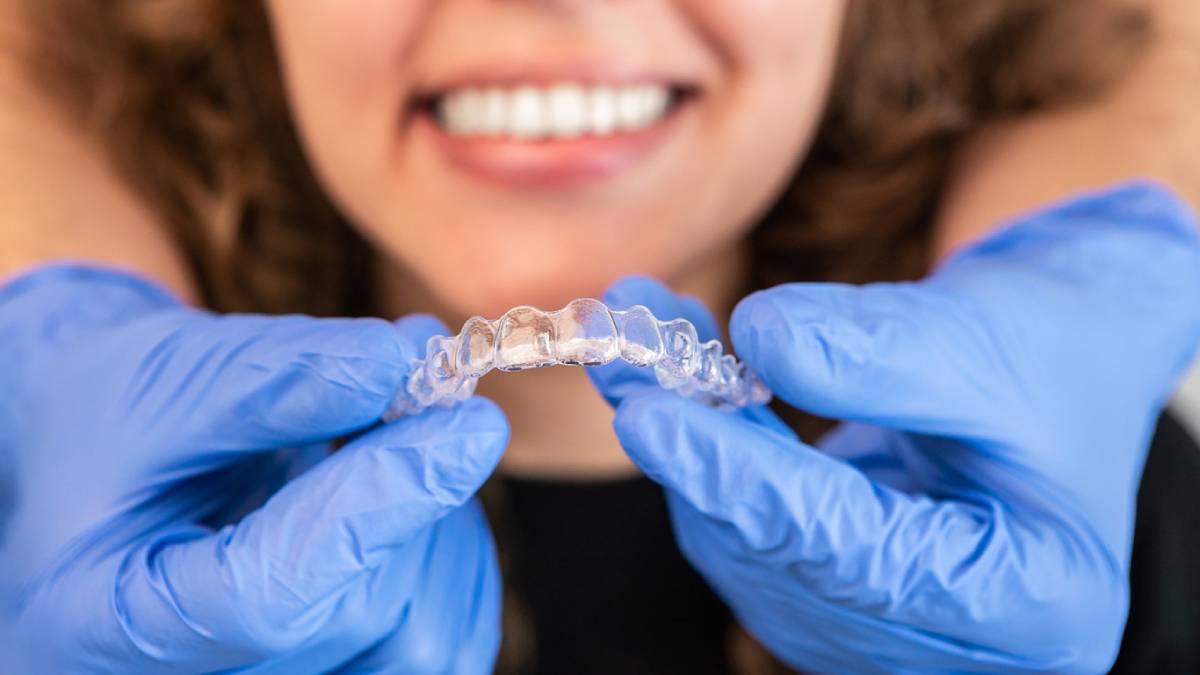One of the most commonly asked questions is if Invisalign is less painful than braces. For some patients, Invisalign treatment can feel significantly less painful than treatment with braces. However, the pain levels every patient will experience during treatment can vary and depend on different factors, including the technical aspects of both treatments and personal pain tolerance.
Is Invisalign Less Painful Than Braces?
In this article, we explain the difference between braces and Invisalign and the level of discomfort a patient might expect from both methods of teeth straightening.
Difference Between Braces and Invisalign
Invisalign is a very popular alternative to traditional metal braces because the aligners are made of clear plastic. This makes Invisalign much less noticeable on your teeth than braces. Apart from aesthetics, there are several differences between braces and Invisalign, which include:
- Technical differences
- Hygiene routine
- Visits to the dentist’s office
- Comfort and pain levels
Technical Differences Between Braces and Invisalign
The main advantage of traditional braces is that they can correct different types of severe orthodontic imperfections. Braces can correct a patient’s bite, vertically or horizontally misaligned teeth, and overcrowded and rotated teeth. Invisalign, on the other hand, is usually chosen as a treatment in cases of horizontally misaligned teeth or when the crookedness of the patient’s teeth is not too severe.
Both solutions work by applying pressure to your teeth. There is a membrane inside your jaw that connects the teeth with the jawbone. During the treatment process, the membrane adapts and responds to the pressure of the aligners, and your smile takes the desired form.
This difference in the way both treatments work is due to the way they affect your teeth. Traditional braces are attached to the teeth and constantly apply pressure on your teeth to gradually change their position. Braces apply pressure to all teeth at the same time. This means that even the straight teeth will move before getting into a desired alignment with all other teeth.
With the Invisalign aligners, your family dentist can plan the shift of every individual tooth, avoiding affecting the straight teeth. This makes the process of gently moving and rotating the teeth easily controlled by the dentist.
Comfort and Pain Levels of Braces and Invisalign Treatments
Typically, Invisalign is considered to hurt less than traditional metal braces. However, there is still a possibility that you will experience some discomfort and pain because wearing Invisalign is not a completely pain-free process. These sensations are unavoidable when it comes to moving your teeth, because the process affects the membrane underneath your gums and the jawbone.
Braces Treatment
Braces have to be often adjusted to apply the appropriate amount of pressure to the right teeth. Patients usually experience pain or soreness of their teeth for a couple of days after every new adjustment. It can be challenging to eat harder foods on these days. Some patients, whose pain tolerance is low, might need to take painkillers when the sensation interferes with their daily activities.
Braces can be uncomfortable not only because of the pressure they apply to your teeth, but also because their metal parts can irritate the surrounding tissues in your mouth. Some people experience soreness of the insides of their cheeks, which get rubbed by the braces. This issue, however, tends to go away once you are used to wearing braces.
Invisalign Treatment
During your treatment with Invisalign, you will get a new set of custom-made trays every two weeks. Each set applies pressure on your teeth in a slightly different way than the previous one. When you are getting used to the new set, you can experience soreness and pain, similar to when the braces are adjusted. However, generally, the pain caused by Invisalign is not as severe as that caused by braces. The pain typically goes away in a couple of days.
There is also always a possibility to remove your Invisalign trays when, for example, eating. This makes chewing even harder foods less painful as opposed to when you eat with braces, which you can not remove. However, you should remember that the trays have to be worn for 20 to 22 hours a day for the treatment to be effective.
Invisalign aligners can have rough ages and also rub against your gums and the insides of your cheeks and lips. With time, the necessary calluses develop in your mouth, which will lessen and prevent irritation. On top of that, the rough edges of your trays can be easily smoothed out by your dentist if need be, which makes wearing them more comfortable.
Tips for Reducing the Pain
Usually, the pain caused by the teeth straightening treatment is manageable. There are a couple of things you can do:
Eat soft foods that do not demand too much biting or chewing.
Apply a cold compress to the external side of your jaw for 10 to 15 minutes a couple of times a day.
Take an over-the-counter painkiller. But remember to never exceed the recommended dose.
If you wear Invisalign, switch to the new set of trays before going to bed. Your teeth will get used to the pain while you sleep.
There are several significant advantages to choosing Invisalign treatment over traditional metal braces, including the lower levels of pain the treatment causes. Make an appointment with one of our specialists in Glendora Family Dental to learn more about the treatment and to see if it suits your needs.



